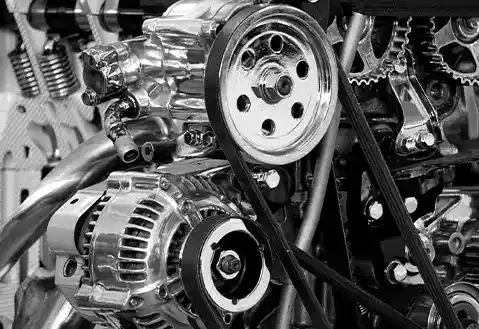- Arabic
- French
- Russian
- Spanish
- Portuguese
- Turkish
- Armenian
- English
- Albanian
- Amharic
- Azerbaijani
- Basque
- Belarusian
- Bengali
- Bosnian
- Bulgarian
- Catalan
- Cebuano
- Corsican
- Croatian
- Czech
- Danish
- Dutch
- Afrikaans
- Esperanto
- Estonian
- Finnish
- Frisian
- Galician
- Georgian
- German
- Greek
- Gujarati
- Haitian Creole
- hausa
- hawaiian
- Hebrew
- Hindi
- Miao
- Hungarian
- Icelandic
- igbo
- Indonesian
- irish
- Italian
- Japanese
- Javanese
- Kannada
- kazakh
- Khmer
- Rwandese
- Korean
- Kurdish
- Kyrgyz
- Lao
- Latin
- Latvian
- Lithuanian
- Luxembourgish
- Macedonian
- Malgashi
- Malay
- Malayalam
- Maltese
- Maori
- Marathi
- Mongolian
- Myanmar
- Nepali
- Norwegian
- Norwegian
- Occitan
- Pashto
- Persian
- Polish
- Punjabi
- Romanian
- Samoan
- Scottish Gaelic
- Serbian
- Sesotho
- Shona
- Sindhi
- Sinhala
- Slovak
- Slovenian
- Somali
- Sundanese
- Swahili
- Swedish
- Tagalog
- Tajik
- Tamil
- Tatar
- Telugu
- Thai
- Turkmen
- Ukrainian
- Urdu
- Uighur
- Uzbek
- Vietnamese
- Welsh
- Bantu
- Yiddish
- Yoruba
- Zulu
ಡಿಸೆ . 16, 2024 04:48 Back to list
v belt
Understanding V-Belts An Essential Component in Mechanical Drives
V-belts have become an integral part of mechanical systems, especially in industries where machines are relied upon to operate with precision and efficiency. This simple yet effective component plays a vital role in power transmission, making it crucial to understand its function, types, and maintenance.
What is a V-Belt?
A V-belt, also known as a vee belt, is a type of belt that is characterized by its trapezoidal cross-section. This design allows it to fit snugly into a matching groove on pulleys, providing efficient traction and minimizing slippage. The shape of the V-belt not only aids in power transmission but also helps in aligning the belt and pulley systems effectively.
V-belts are extensively used in various applications, including automotive engines, agricultural machinery, HVAC systems, and industrial equipment. Their adaptability and reliability make them a popular choice for driving multiple components simultaneously.
Types of V-Belts
V-belts come in various types, each designed to cater to specific applications and environments
1. Classical V-Belts These are the most common variants, available in standard sizes such as A, B, C, D, and E. They are typically used in light to medium-duty applications.
2. Narrow V-Belts Compared to classical belts, narrow V-belts have a smaller width and are designed for high-speed applications. They can handle more horsepower while occupying less space, making them suitable for compact machinery.
3. Wrapped V-Belts These belts have a fabric cover that enhances durability and provides better flexibility. Wrapped V-belts are often used in heavy-duty applications where additional protection against wear is needed.
4. Cogged V-Belts Featuring notches along the inner surface, cogged V-belts offer improved flexibility and grip. They are ideal for high-speed applications as they reduce the risk of slippage and heat buildup.
5. Variable Speed V-Belts These belts are designed for variable speed applications, allowing for speed adjustments without changing the belt width.
Advantages of V-Belts
1. Efficiency V-belts are known for their high efficiency in transferring power, often achieving efficiency ratings over 95%. Their design minimizes slippage, ensuring that energy is used effectively.
v belt

2. Cost-Effective Compared to other power transmission systems, such as chains or gears, V-belts are generally more economical in terms of initial cost and maintenance.
3. Quiet Operation V-belts operate quietly, reducing noise pollution in both industrial and residential environments. This makes them an ideal choice for applications where noise reduction is essential.
4. Flexible Design The ability of V-belts to operate smoothly over a range of speeds and loads makes them versatile across various industries.
5. Low Maintenance V-belts typically require less maintenance than other power transmission options. Regular checks for wear and tension adjustments are usually sufficient to ensure optimal performance.
Maintenance of V-Belts
To maximize the lifespan and efficiency of V-belts, regular maintenance is essential
1. Tension Adjustment Proper tension is crucial. A belt that is too loose can slip, while one that is too tight can cause excessive wear. Regularly check and adjust the tension as needed.
2. Visual Inspection Inspect belts frequently for signs of wear, such as fraying, cracking, or glazing. Early detection of issues can prevent failures and costly downtime.
3. Alignment Checks Ensure that pulleys are aligned correctly. Misalignment can lead to uneven wear and reduced efficiency.
4. Cleaning Keep the belt free from oil, grease, and dirt. Contaminants can adversely affect the belt's grip and longevity.
5. Replacement Finally, replace belts according to the manufacturer’s recommendations or at the first sign of significant wear.
Conclusion
V-belts are indispensable components of modern mechanical systems, providing efficient and reliable power transmission across a wide range of applications. By understanding their types, advantages, and maintenance needs, users can ensure optimal performance and longevity, ultimately contributing to the productivity and efficiency of their operations. As technology continues to evolve, V-belt designs and materials are likely to advance, further enhancing their capabilities in the mechanical landscape.
-
Korean Auto Parts Timing Belt 24312-37500 For Hyundai/Kia
NewsMar.07,2025
-
7PK2300 90916-T2024 RIBBED BELT POLY V BELT PK BELT
NewsMar.07,2025
-
Chinese Auto Belt Factory 310-2M-22 For BMW/Mercedes-Benz
NewsMar.07,2025
-
Chinese Auto Belt Factory 310-2M-22 For BMW/Mercedes-Benz
NewsMar.07,2025
-
90916-02660 PK Belt 6PK1680 For Toyota
NewsMar.07,2025
-
drive belt serpentine belt
NewsMar.07,2025

